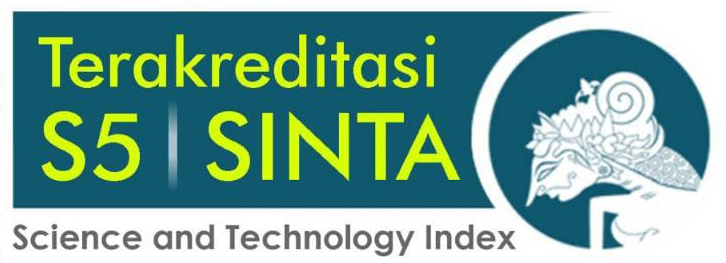Kebutuhan Pelayanan Komplementer pada Ibu Hamil di Kota Denpasar
DOI:
https://doi.org/10.51172/jbmb.v5i1.332Keywords:
ibu hamil, kebutuhan, pelayanan komplementerAbstract
Tujuan: Tujuan penelitian ini adalah mengidentifikasi kebutuhan layanan komplementer pada ibu hamil di Kota Denpasar.
Metode penelitian: Penelitian ini menggunakan desain deskriptif cross-sectional pada 96 ibu hamil di Kota Denpasar yang diberikan kuisioner kebutuhan layanan komplementer
Hasil dan pembahasan: Hasil penelitian menunjukan bahwa ibu hamil dengan usia kehamilan trimester I membutuhkan layanan komplementer akupresur dan akupuntur dalam kehamilan, yoga dalam kehamilan sangat dibutuhkan oleh ibu hamil trimester II sedangkan ibu hamil trimester III membutuhkan layanan hypnobirthing atau meditasi.
Implikasi: Adanya kebutuhan akan layanan komplementer yang terintegrasi dengan pelayanan ibu hamil membuat penyedia layanan kesehatan perlu mendapatkan pelatihan terapis komplementer.
References
Alemu Anteneh, T., Aklilu Solomon, A., Tagele Tamiru, A., Solomon Tibebu, N., Nigatu Alemu, H., Yibeltal Desalegn, S., Getaneh Ayalew, H., Abegaz, M. Y., & Ambachew Kebede, A. (2022). Knowledge and Attitude of Women Towards Herbal Medicine Usage During Pregnancy and Associated Factors Among Mothers Who Gave Birth in the Last Twelve Months in Dega Damot District, Northwest Ethiopia. Drug, Healthcare and Patient Safety, Volume 14(March), 37–49. https://doi.org/10.2147/dhps.s355773
Atmawati, R., & Hardianto, G. (2013). Efaktifitas Hypoirthing Terhadap Kecemasan Ibu Primigravida Trimester 3. Jurnal Ilmiah Bidan, June.
Barnes, L. A. J., Barclay, L., McCaffery, K., & Aslani, P. (2018). Complementary medicine products used in pregnancy and lactation and an examination of the information sources accessed pertaining to maternal health literacy: A systematic review of qualitative studies. BMC Complementary and Alternative Medicine, 18(1), 1–27. https://doi.org/10.1186/s12906-018-2283-9
Barnes, L. A. J., Barclay, L., McCaffery, K., & Aslani, P. (2019a). Complementary medicine products: Information sources, perceived benefits and maternal health literacy. Women and Birth, 32(6), 493–520. https://doi.org/10.1016/j.wombi.2018.11.015
Barnes, L. A. J., Barclay, L., McCaffery, K., & Aslani, P. (2019b). Factors influencing women’s decision-making regarding complementary medicine product use in pregnancy and lactation. BMC Pregnancy and Childbirth, 19(1), 1–14. https://doi.org/10.1186/s12884-019-2396-2
Barnes, L. A. J., Barclay, L., McCaffery, K., & Aslani, P. (2019c). Women’s health literacy and the complex decision-making process to use complementary medicine products in pregnancy and lactation. Health Expectations, 22(5), 1013–1027. https://doi.org/10.1111/hex.12910
Birdee, G. S., Kemper, K. J., Rothman, R., & Gardiner, P. (2014). Use of complementary and alternative medicine during pregnancy and the postpartum period: an analysis of the National Health Interview Survey. Journal of Women’s Health (2002), 23(10), 824–829. https://doi.org/10.1089/jwh.2013.4568
Bowman, R. L., Davis, D. L., Ferguson, S., & Taylor, J. (2018). Women’s motivation, perception and experience of complementary and alternative medicine in pregnancy: A meta-synthesis. Midwifery, 59, 81–87. https://doi.org/10.1016/j.midw.2017.11.007
Chang, H. Y. A., Wallis, M., Tiralongo, E., & Wang, H. L. (2012). Decision-making related to complementary and alternative medicine use by people with Type 2 diabetes: A qualitative study. Journal of Clinical Nursing, 21(21–22), 3205–3215. https://doi.org/10.1111/j.1365-2702.2012.04339.x
Frawley, J., Adams, J., Sibbritt, D., Steel, A., Broom, A., & Gallois, C. (2013). Prevalence and determinants of complementary and alternative medicine use during pregnancy: Results from a nationally representative sample of Australian pregnant women. Australian and New Zealand Journal of Obstetrics and Gynaecology, 53(4), 347–352. https://doi.org/10.1111/ajo.12056
Harahap, D., & Afiyanti, Y. (2019). Women’s experiences of the prenatal group class in Indonesia. Enfermeria Clinica, 29, 151–158. https://doi.org/10.1016/j.enfcli.2019.04.023
MAKHAPILA, M., Makalliwa, G., & Mong’are, S. (2022). Complementary and Alternative Medicine Utilization among Pregnant Women Attending Antenatal Care Clinics in Tongaren Sub-County, Kenya: a Cross-sectional Survey. Women, Midwives and Midwifery, 2(1), 65–83. https://doi.org/10.36749/wmm.2.1.65-83.2022
Masdinarsah, I. (2022). Akupresur Dalam Mengurangi Emesis Gravidarum. Jurnal Asuhan Ibu Dan Anak, 7(1), 45–51. https://doi.org/10.33867/jaia.v7i1.302
Nik Yusof Fuad, N. F., Ching, S. M., Awg Dzulkarnain, D. H., Cheong, A. T., & Zakaria, Z. A. (2020). Complementary alternative medicine use among postpartum mothers in a primary care setting: a cross-sectional study in Malaysia. BMC Complementary Medicine and Therapies, 20(1), 197. https://doi.org/10.1186/s12906-020-02984-7
Quzmar, Y., Istiatieh, Z., Nabulsi, H., Zyoud, S. H., & Al-Jabi, S. W. (2021). The use of complementary and alternative medicine during pregnancy: a cross-sectional study from Palestine. BMC Complementary Medicine and Therapies, 21(1), 1–10. https://doi.org/10.1186/s12906-021-03280-8
Rong, L., Wang, R., Ouyang, Y. Q., & Redding, S. R. (2021). Efficacy of yoga on physiological and psychological discomforts and delivery outcomes in Chinese primiparas. Complementary Therapies in Clinical Practice, 44(June), 101434. https://doi.org/10.1016/j.ctcp.2021.101434
Rusmita, E. (2015). Pengaruh Senam Hamil Yoga Terhadap Persalinan Di Rsia Limijati Bandung. Jurnal Ilmu Keperawatan, III(2), 80–86.
Sarecka-Hujar, B., & Szulc-Musioł, B. (2022). Herbal Medicines—Are They Effective and Safe during Pregnancy? Pharmaceutics, 14(1), 1–27. https://doi.org/10.3390/pharmaceutics14010171
Senudin, P. K., Janggu, J. P., & Eufrasia Prinata Padeng. (2021). Pelatihan Akupresur Mandiri Pada Ibu Hamil Trimester III. Jurnal SOLMA, 10(1), 149–154. https://doi.org/10.22236/solma.v10i1.5661
Steel, A., Adams, J., Sibbritt, D., Broom, A., Frawley, J., & Gallois, C. (2014). Relationship between complementary and alternative medicine use and incidence of adverse birth outcomes: An examination of a nationally representative sample of 1835 Australian women. Midwifery, 30(12), 1157–1165. https://doi.org/10.1016/j.midw.2014.03.015
Thipanyane, M. P., Nomatshila, S. C., & Oladimeji, O. (2022). Perceptions of Pregnant Women on Traditional Health Practices in a Rural Setting in South Africa.
Downloads
Published
How to Cite
Issue
Section
License
Authors who publish with this journal agree to the following terms:
Authors retain copyright and grant the journal right of first publication with the work simultaneously licensed under a Attribution-NonCommercial-ShareAlike 4.0 International (CC BY-NC-SA 4.0) that allows others to share the work with an acknowledgement of the work's authorship and initial publication in this journal.
Authors are able to enter into separate, additional contractual arrangements for the non-exclusive distribution of the journal's published version of the work (e.g., post it to an institutional repository or publish it in a book), with an acknowledgement of its initial publication in this journal.
Authors are permitted and encouraged to post their work online (e.g., in institutional repositories or on their website) prior to and during the submission process, as it can lead to productive exchanges, as well as earlier and greater citation of published work (See The Effect of Open Access).




